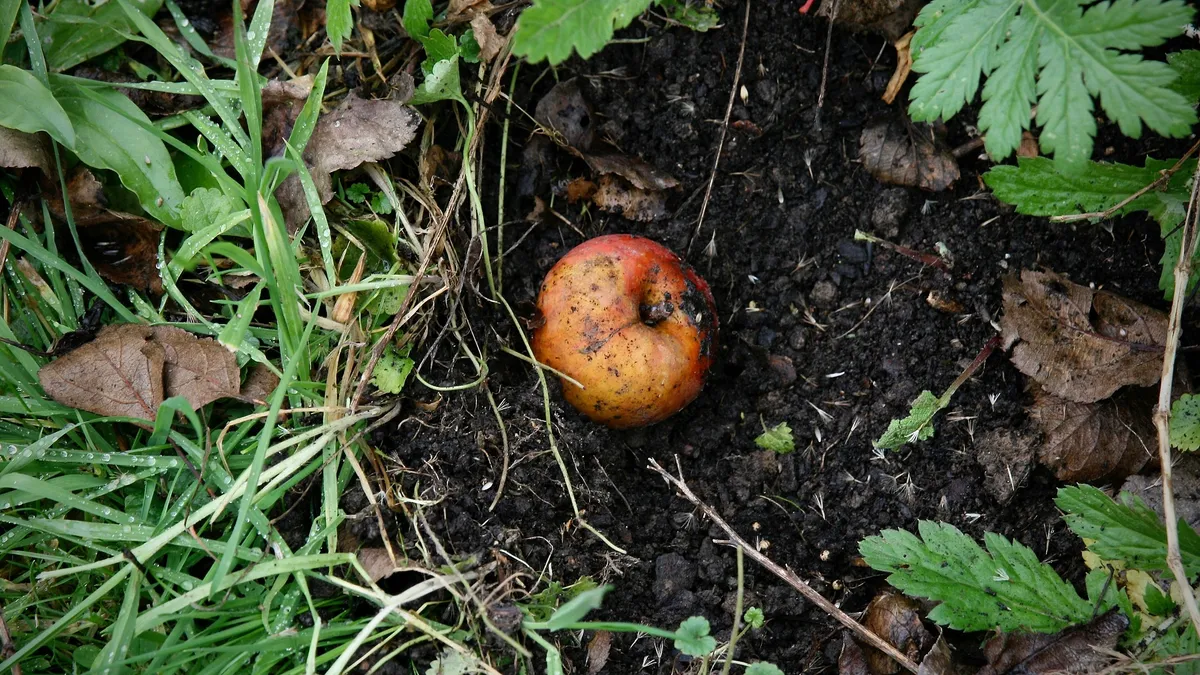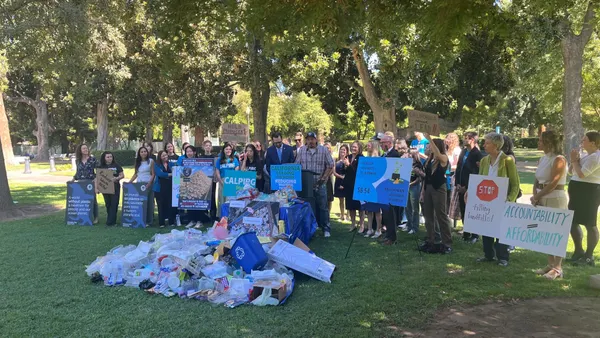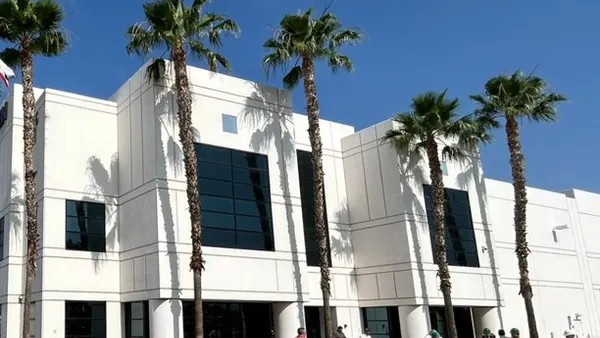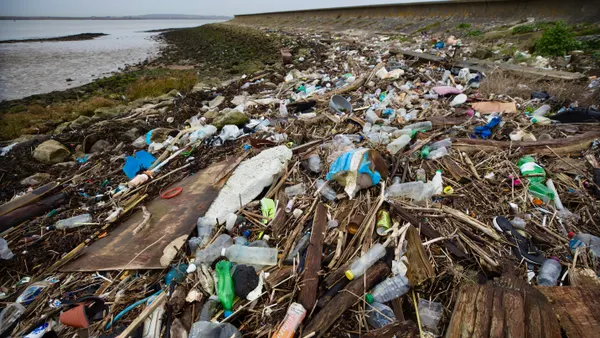Dive Brief:
- A recent report laying out critical action items for addressing climate change found reducing food waste to be the most pressing solution in a long list aimed at keeping global warming to under 2˚C. That finding is included in the 2020 Drawdown Review, a 91-page study by the nonprofit group Project Drawdown prior to the new coronavirus pandemic.
- The group — which conducts ongoing reviews of climate solutions — weighed dozens of options and found greenhouse gases in the atmosphere could peak and drop as early as 2040 if all solutions were combined. That includes critical buy-in from players including the waste industry, which the authors argue can help "move us toward a circular economy."
- Food isn't the report's only waste emphasis — bolstering and improving waste-to-energy (WTE) practices and capturing landfill gas are also key components, along with the potential for composting and anaerobic digestion. "I view these industries as valuable contributors to the solution system," Project Drawdown Vice President Chad Frischmann told Waste Dive in March, caveating that emphasis should still be on overall waste reduction.
Dive Insight:
Food waste's role in climate change has long been a driving topic for publications like BioCycle, as well as for environmental groups, organics recyclers and other invested parties. The Drawdown report echoes those conversations already playing out in the sector, but is notable for its emphasis on the extent to which waste reduction and the industry can play a role in dramatically limiting global warming.
The group's findings maintain that point could be possible within the next two decades if human behaviors change dramatically. Food is a leading focal point in the report and Frischmann emphasized its critical place in climate conversations.
"[If] one starts to think about all the energy and emissions that come along with every drop of oil, crust of bread or chicken breast, it becomes pretty clear as to why food waste matters," he said, pointing to emissions stemming from agriculture, harvesting and processing, packaging, transportation, food preparation and ultimately the discarding of items.
Reducing food waste is considered critical to staving off 2˚C of warming, the report argues, pointing to the ceiling temperature increase laid out in the Paris climate agreement. The item ranks lower down for efforts to cut off warming under 1.5˚C, the Paris agreement's more ambitious goal. Expanding onshore wind power and utility-scale solar power both rank in front of food waste for the latter metric, emphasizing the importance of an energy transition.
The more ambitious scenario requires a 75% reduction in food waste and loss globally within 30 years. But Frischmann underscored the importance of pairing that with other efforts. Industrial practices more broadly present "some of the biggest challenges for reducing emissions to zero," the report states.
"Waste can be reclaimed as a resource—something of value, rather than something to discard—to reduce the use of raw materials and energy," it continues, "thereby reducing emissions."
A 2019 University of California-Davis study found using compost alongside cover crops could significantly sequester carbon — boosting carbon content in soil by 12.6%. While that study relied on chicken manure compost, research is ongoing to assess whether yard and food waste could yield similar results. And efforts to embrace organics diversion are gaining traction on a state and local level.
California's SB 1383, for example, specifically focuses on tackling climate change through dramatic waste reduction measures. The law targets 50% organic waste reduction in 2020, and 75% by 2025. That end date includes an additional goal of diverting 20% or more of edible food waste for human consumption. Other states also have organics diversion mandates or policies, including Connecticut, Maryland, Massachusetts, Minnesota, New York, Rhode Island and Vermont.
Drawdown's findings also emphasize embracing multiple avenues towards cutting down on waste in addition to composting and anaerobic digestion, including WTE, landfill methane capture and recycling. "End of life management of organic waste is an important set of solutions for organic municipal solid waste that cannot be prevented," said Frischmann.
Materials seen as more circular — like bioplastics or concrete made from fly ash — are also important, Project Drawdown maintains. Companies like Starbucks and McDonald's — who are driving the NextGen Cup Challenge — are already seeking alternatives to their current waste stream issues and the report suggests such endeavors are critical.
"We need to rethink how we produce materials to make them more regenerative and part of a circular economy. Other solutions include bamboo production, biomass-based insulation and building with wood," said Frischmann.
The report's findings are also up against new realities due to the COVID-19 pandemic. Tracie Bills, a senior project manager with SCS Engineers, told Waste Dive that California has not pushed back its timeline for organics regulations, and municipalities and companies are still planning with that in mind. But that could be re-evaluated in the coming months as the pandemic peaks.
And other areas are already scaling back their ambitions. New York City has suspended its curbside organics program due to budget cuts and Vermont is likely delaying its July 1 food scrap disposal ban regulations. Those changes could foreshadow a trend — one with potentially significant food waste implications and climate impacts.










